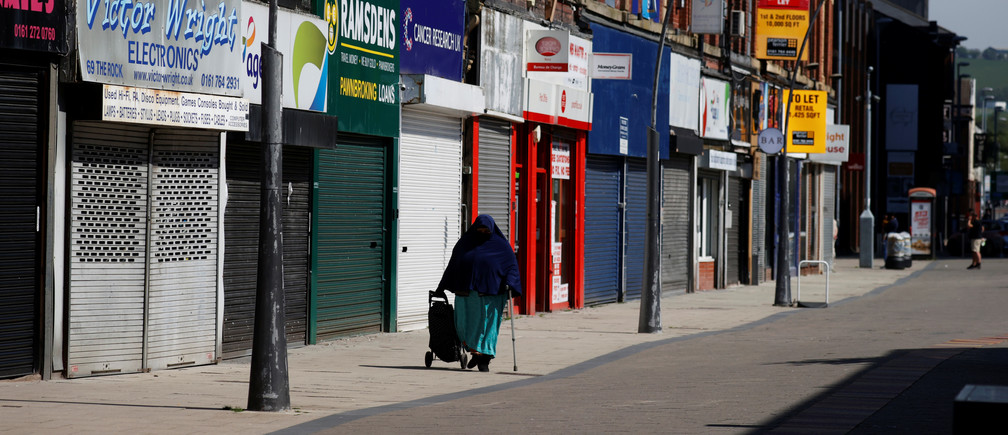The “Great Lockdown” has hit global economies hard. Business shutdowns have left unemployment soaring, supply chains fragmented and markets plummeting. One International Monetary Bank official has said the Great Lockdown could lead to the worst economic downturn since the Great Depression.
The resulting recovery is likely to be slow and experts have considered a range of models for what that might recovery could look like. Earlier this spring, some analysts hoped for a V-shaped recovery that would see us bounce back quickly. Now, some back the “Nike swoosh” – a stuttering comeback over a longer time.
The Brookings Institution recently outlined a range of models that analysts and economists have been considering. We’ve combined their analysis with insights from other sources, including those quoted by investment magazine Barron’s, the BBC and others to provide a full range of voices for what could happen next.
What is the World Economic Forum doing about the coronavirus outbreak?
Responding to the COVID-19 pandemic requires global cooperation among governments, international organizations and the business community, which is at the centre of the World Economic Forum’s mission as the International Organization for Public-Private Cooperation.
How can we collaborate to stop the spread of COVID-19?
Since its launch on 11 March, the Forum’s COVID Action Platform has brought together 1,667 stakeholders from 1,106 businesses and organizations to mitigate the risk and impact of the unprecedented global health emergency that is COVID-19.
The platform is created with the support of the World Health Organization and is open to all businesses and industry groups, as well as other stakeholders, aiming to integrate and inform joint action.
As an organization, the Forum has a track record of supporting efforts to contain epidemics. In 2017, at our Annual Meeting, the Coalition for Epidemic Preparedness Innovations (CEPI) was launched – bringing together experts from government, business, health, academia and civil society to accelerate the development of vaccines. CEPI is currently supporting the race to develop a vaccine against this strand of the coronavirus.
Z-shaped recovery

Brookings notes this is the most optimistic timeline. In this outcome, its experts explain, the public goes on a spree once restrictions are eased, spending all the money they’d held tight to during lockdown. With this scenario, retail, hospitality and travel could see a brief boom as people celebrate the end of restrictions, before GDP settles back into its pre-pandemic trajectory. Businesses make back the money they would have made during the lockdown. Even the many optimistic observers say this outcome is unlikely.
V-shaped recovery
A V-shaped rebound would bring a sharp dip in economic activity matched by an equally brisk surge back to normality. This scenario is considered one of the best case scenarios, reports the BBC, since it assumes a downturn might just last a handful of quarters.
The U-shaped recovery

This model shows a sharp dip followed by a long return to a pre-COVID trajectory, one that could last several quarters. In this recovery, we might not see a COVID-19 treatment or vaccine until 2021, according to Barron’s, and consumer spending would edge closer to normal then.
The ‘Nike swoosh’-shaped recovery

The “Nike swoosh” recovery, named after the iconic check-mark logo, brings a dramatic surge once lockdowns end, and a boost that’s blunted quickly. In this scenario, Brookings notes, it “takes a long while for the economy to get back to pre-pandemic trajectory.”
W-shaped recession

This recovery is also known a “double-dip recession”, explains the BBC. The W-shaped curve remains a possibility if finding a treatment or vaccine proves more difficult than expected, adds Barron’s. In this model, new waves of infections bring additional lockdowns and economic uncertainty.
Despite their prominence in warning headlines, double-dip recessions are rare, with only two occurring in modern US history: 1937-38 and 1981-87, both of which resulted from changes in fiscal policy.
L-shaped recession

In this scenario, notes Brookings, the pandemic permanently impacts GDP. Lost investment, paired with productivity slowdowns causes “the trajectory of GDP to be lower than it otherwise would.”
Modern examples include the 2008 recession – from which western economies have not yet recovered, with real GDP still below pre-recession projections – and Japan’s “lost decade” in the 1990s, with the nation yet to return to the growth it saw before that crash, as the BBC reports.
Looking ahead
Many analysts, policymakers and executives believe that only a vaccine or rapid development in COVID-19 treatment will see us return to pre-pandemic projections. As long as the virus remains dangerous, growth will be suppressed.
In the meantime, leaders and experts from around the world are doing what they can to blunt the global economic impact of the crisis. As the International Monetary Fund’s Kristalina Georgieva said last month, a crisis like no other requires a response like no other.


Recent Comments